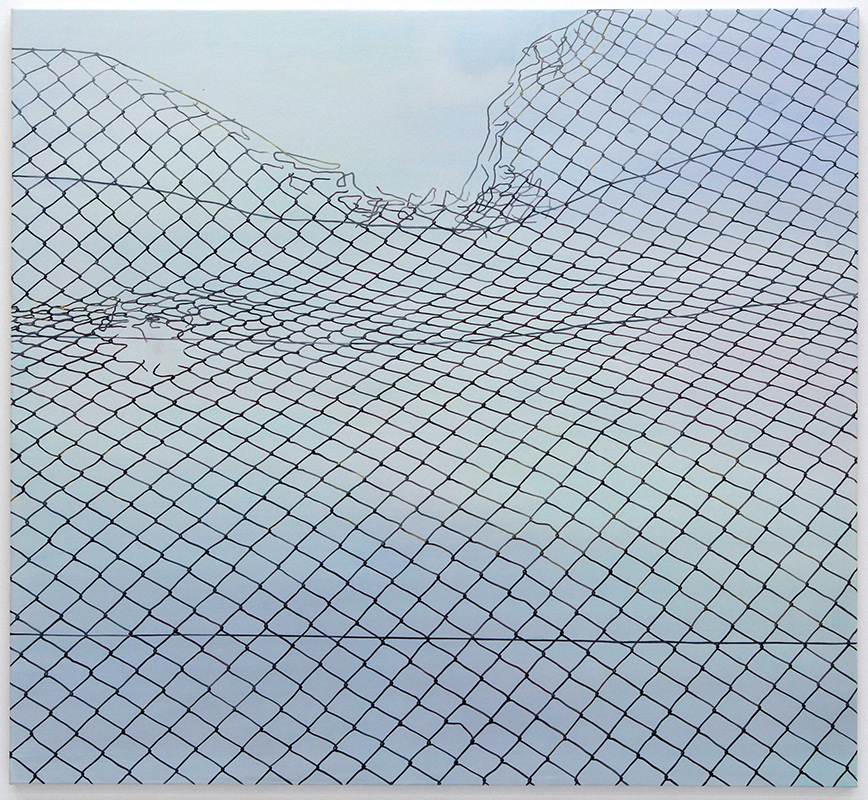Algeria/Morocco
Christopher Christense
On the Other Side, like many of Driss Ouadahi’s oil paintings, is both photorealist and minimalist. Ouadahi, who first received training as an architect, has developed a concentrated interest in the grid-like design of urban architectural structures. The subjects of his paintings over the last 15 years—high-rise buildings and chainlink fences—are nondescript yet visually captivating. They are “based on real architectural elements,” explains Ouadahi, “which form part of the particular psycho-geography of the space and of the non-space.” 1 Ouadahi aims to present his subjects as they are, usually with some suggestive coloristic effects. He seeks a “balance between representation—recognition of the object—and what is evoked.” 2

Oil on canvas
43 ¼ x 47 ¼ in (110 x 120 cm)
Courtesy of Driss Ouadahi and Hosfelt Gallery, San Francisco
On the Other Side is certainly a provocative work. Indeed, Ouadahi himself has said his paintings are meant to invite viewers to “project themselves into a transcended space.” 3 It is impossible to know whether the view here is from inside or outside the fence, but the viewer cannot help but be intrigued by the question of what lies beyond. The hole in the fence cuts open the picture plane, as does the uneven, torn upper edge of the fence, creating liberating openings and suggesting that something had been trying to get through or over, in or out. The surreal shade of blue dominating the composition adds to the uncertainty and ambiguity the image projects. Ouadahi’s fences convey a sense of separation and exclusion; 4 they are a reflection of the political unrest and impermanence experienced by people in the Maghreb as witnessed by the artist. 5
The son of Algerian parents who relocated because of the political situation in Algeria, Ouadahi was born in Casablanca, Morocco in 1959. Algerian independence from France in 1962 allowed his family to move back home. After architectural studies, Ouadahi left Algiers to study at the École Supérieure des Beaux-Arts in Paris. He returned to Algiers in 1984 and enrolled at the newly established École Supérieure des Beaux-Arts (1984-87). Ouadahi cites Algiers, the capital city of Algeria, as an inspiration for much of his work. 6 For the past 20 years, he has lived in Düsseldorf, Germany, where he studied at the Staatliche Kunstakademie (1988-94).
- Rachida Triki and Driss Ouadahi, “’If Walls Could Talk…’: Driss Ouadahi in Conversation with Rachida Triki,” Ibraaz, May 24, 2012. http://www.ibraaz.org/interviews/27. ↑
- Ibid. ↑
- Rachida Triki and Driss Ouadahi. ↑
- Nadour, “Driss Ouadahi – Artists.” Accessed April 2, 2014. http://www.nadour.org/artists/driss-ouadahi. ↑
- Kim Levin, Driss Ouadahi: Densité (New York: Hosfelt Gallery, 2010), n.p. ↑
- Nadour. ↑
